Thursday, 25 October 2012 Written by Ivan Radford

BlogalongaBond. One Bond film a month until Skyfall comes out tomorrow. (OH MY GOD SKYFALL IS OUT TOMORROW! AT LONG LAST. ALL THAT ROGER MOORE WAS WORTH IT.)
It wasn't without excitement that I went into Quantum of Solace. After Martin Campbell's brilliant Casino Royale, Bond's return was a cinematic event worth salivating over. Even the choice of Marc Forster seemed promising - an arthouse director helming a blockbuster? What a grand idea!
But while Daniel Craig's craggy, emotional 007 remained a captivating hero - more a landmine than a lead actor - everything else was kind of, well, dull. There are good bits, let's be clear on that. The environmentally-aware Bond villain (an amusingly whiney Mathieu Amalric) and double-crossing CIA plans are proper shades of grey stuff, but while the set-up is promising, Quantum forgets to add a plot. Was it the writers' strike that left them without the time to finish writing the film? Whatever the reason, the end result was a Bond movie with 25% of a script and 75% white noise. So they did what any blockbuster would and filled it with action.
That wouldn't be a problem if it was good action. But it isn't. Like Yakult, there are good types of action and bad types of action - and this is the bad type. The kind you wouldn't want anywhere near your body, just in case it blew up sideways and chopped your face off.
And that really is how you feel for most of the runtime. The opening begins with a glorious tracking shot over an Italian lake, carefully intercut with shots of Bond’s Aston Martin. But once that shot is finished, the footage is over-edited to shreds. With the exception of one crosscutting night at the opera, the set pieces are so kinetic that you can't tell what's happening; a tin of tuna could direct a better action sequence. At least it would be stationary. At one point during that opening car chase, it looks like Bond drives off a cliff and explodes to death. When Bond finally stops and says it’s time to get out to his shaken and stirred passenger, he’s not the only one ready to leave.
It wasn't without excitement that I went into Quantum of Solace. It was with confusion that I left.
So what went wrong? Two things: Matt Chesse and Richard Pearson. How did the editors screw up so badly? They probably read this informative pamphlet I found in my DVD box...
Read more...
Sunday, 30 September 2012 Written by Ivan Radford
 BlogalongaBond. One Bond film each month until Skyfall in October. BlogalongaBond. One Bond film each month until Skyfall in October.
Finally. Casino Royale. Following the mountain of butt-nubbins that was Die Another Day, Daniel Craig’s arrival was a shot of pure 007 joy – like getting a blowjob from Sophie Marceau after a one-night stand with Jaws.
Martin Campbell returned to the helm to do what he did best: reboot the franchise to fit its era. Brosnan’s 90s baptism by Russians smartly played up the irony while allowing for some revenge. Craig’s noughties cocktail kept the cold-blooded part – a cornerstone of Ian Fleming’s character – and added in a dash of On Her Majesty’s Secret Service’s sorrow.
But it was more than that: as well as nailing Bond’s character, Casino Royale knew when to blow things up and when to sit things out. Gone are the CGI surfboards and ice palaces; in their place, clever exchanges of dialogue and games of cards. After an explosive first half (and some bold opening credits), it really does feel like we’re back in Dr. No territory. Casino Royale didn’t out-Bourne Jason Bourne by punching people in the face. It did it by staying quiet for the middle act and letting Craig’s dormant landmine take centre stage.
And then there’s Eva Green - EVA GREEN – whose independent streak and sexy smarts made her the first, and arguably best, Bond girl of the series. She’s the perfect companion for Mads Mikkelsen’s quiet, calculating Bond villain, both of them adding realism rather than camp humour to proceedings.
Held together by David Arnold’s absolutely stonking score, Casino Royale doesn’t so much slap Die Another Day around the face as strap Pierce Brosnan to a chair and whip his cheesy balls with a rope while yelling: “Will you yield?” It’s a cathartic release for everybody.
Still, Casino Royale’s not the first time United Artists/MGM have tried to reboot Bond. OHMSS removed the polish of Diamonds Are Forever. For Your Eyes Only scaled back Moonraker. GoldenEye resurrected 007’s misogynistic dinosaur. The boldest restart, though, occurred in 1992, way before Martin Campbell entered the frame. And its legacy – nay, its example – lives on to this day.
I am talking, of course, about James Bond Jr.
Read more...
Friday, 31 August 2012 Written by Ivan Radford
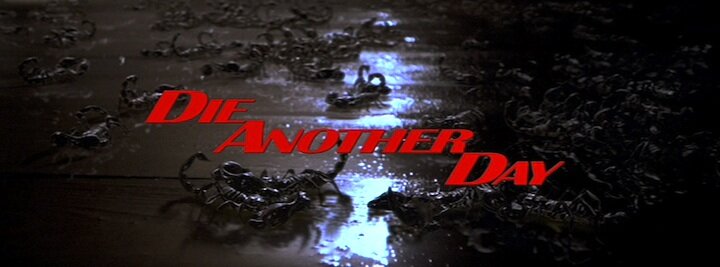
BlogalongaBond. One Bond film a month until Skyfall turns up.
If The World Is Not Enough saw Pierce Brosnan lose control of his cheese-nibbling habit, Die Another Day saw The Bronhomme dive face-first into a giant vat of brie. Terrible dialogue, ludicrous science, a dumb plot. All of it stinks of mouldy lactose. It’s a proper, not-safe-for-humans, toxic Dairylea dunker of a film.
So concerned with 007’s 20th anniversary were Eon, they gave writers Neal Purvis and Robert Wade free reign to do whatever the hell they wanted. Despite turning out a solid TWINE script, the result here was a string of nonsensical set pieces and stupid villains all conceived with the sole purpose of constantly referring to Bond’s birthday – like a drunk uncle who forgets what day it is and tries to fob you off with a tenner the morning afterwards.
Old props appeared, parachutes popped out and Bond continued into space with technology that Roger Moore could only dream of. Make no mistake: this was the Moonraker of the 21st Century. But featuring some extra bullshit about DNA.
Even the henchmen were rubbish, half of them only invented just as an excuse for a pun. “My name is Mr. Kil,” says one after opening a car door. “That’s a name to die for,” retorts Bond. This has absolutely nothing to do with the rest of the film.
And we still haven’t got to that flipping invisible car. As if ruining John Cleese wasn’t bad enough, Die Another Day then had to go and tarnish the reputation of the Aston Martin as well, drowning everyone and everything in a river of melted brie.
And THEN, after paddling up and down in Aston Martin’s cheddary fondue grave, it had the gall to take Ian Fleming’s gritty, manly secret agent and dump him in the middle of a CGI surfing set piece that’s closer to a SNES game than a Hollywood blockbuster. You couldn’t be cheesier if you were listening to Come On Eileen on a New Zealand LPFM radio station (called Cheese) while wolfing down Wensleydale and reading Cheese!, the monthly Japanese manga magazine. You might as well replace Pierce Brosnan with a CGI Cheese String for all the difference it makes.
It’s a wonder, then, that Die Another Day starts off so phenomenally well. The Bronhomme grows a proper beard, is banished by M and winds up out of date in the changed, modern world of espionage. Why? Because director Lee Tamahori had one good idea: trying to kill Bond. He spends the whole of the opening credit beating the heck out of 007 in a North Korean jail cell. Oh yes, that Tamahori was a sadistic git, all right.
But even before the near-death of 007, Die Another Day’s introductory sequence is top-notch. How can you rival such a thrilling, surprising slice of entertainment?
The first step is to read this informative pamphlet I found in my Die Another DVD case…
Read more...
Saturday, 30 June 2012 Written by Ivan Radford
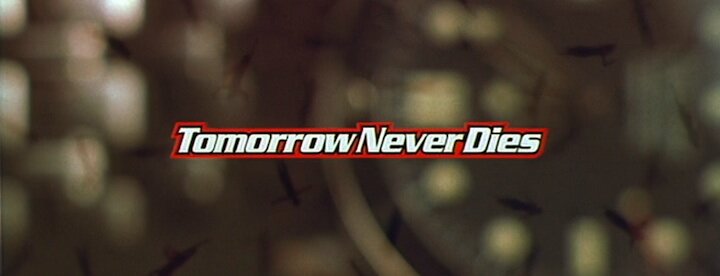 BlogalongaBond. One Bond film each month until Skyfall turns up. BlogalongaBond. One Bond film each month until Skyfall turns up.
I can never work out where I stand on Tomorrow Never Dies. On the one hand, it’s a laughably ridiculous romp featuring some of the dumbest dialogue since Diamonds Are Forever. On the other hand, it’s a laughably ridiculous romp featuring some of the dumbest dialogue since Diamonds Are Forever.
Stealth boats? Titles that make no sense? German torture specialists? It may star Pierce Brosnan, but this is textbook Roger Moore bunkum. And yet it’s a LOT of fun. Partly because it features two of the franchise’s very best vehicle set pieces – Vic Armstrong, jumping from stuntman to second unit director, obviously took our James Bond driving lesson – alongside a genuinely independent Bond girl (a butt-kicking Michelle Yeoh). Partly because David Arnold's score does what Eric Serra failed to do and finish John Barry's journey into electro-tinged modernity. And partly because it has something Roger Moore’s era was missing: Jonathan Pryce.
Hammier than Jon Hamm eating a ham sandwich while playing with his Toy Story pig action figure, Pryce’s Elliot Carver chomps his way through the scenery like Christopher Lee’s bastard porky offspring. Some argue that Bond shouldn’t be wasting time on unthreatening, idiotic villains. I say bravo to Bruce Feirstein for turning Cold War 007 into 20th Century satire. After all, there are almost as many laughs here as In the Loop – albeit for some of the wrong reasons.
Does Tomorrow Never Dies’ Elliot Carver represent Rupert Murdoch, whose flagship tabloid publication The Sun was on 10 million readers a day in the year of the film’s release? That’s what most people think and it diminishes the film to a footnote in the post-News of the World scandal, a sort of Michael Bay’s Leveson: The Movie (thanks to @followthelemur for coining that one).
But it’s more than that. Indeed, it came before any of it happened. Based on Robert Maxwell, the media's other R.M., Tomorrow Never Dies is a blueprint for rival tycoons and wannabe successors - an overblown take on one man's legacy that only looks silly now because of the absurd events that have happened in real life. (That and the fact that he looks and sounds like Michael Howard.)
To wit, let’s take a look at this educational pamphlet I found in my DVD case...
Read more...
Monday, 30 April 2012 Written by Ivan Radford
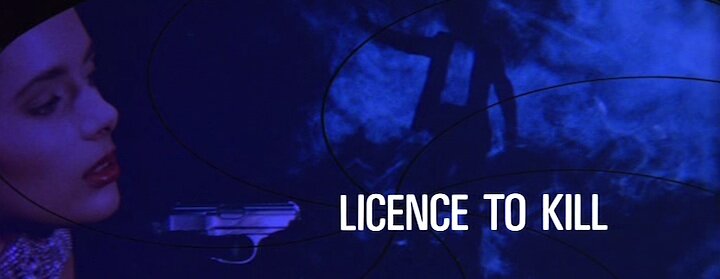 BlogalongaBond. One Bond film a month until Bond 23 turns up. BlogalongaBond. One Bond film a month until Bond 23 turns up.
There's nothing like a secret agent going rogue. Actually, there's nothing like a secret who doesn't: they literally don't exist.
Moles, insiders, traitors, saboteurs, mavericks, heroes, wrongly-accused people - from Harry Palmer and Jason Bourne to Veronica Salt and Ethan Hunt, going rogue is in every secret agent's job description. It's actually expected by your employers. If you don't go rogue at least once in your career, you get bumped off. Probably by another rogue agent.
And that's why I, like many others, love Licence to Kill. It's the nasty Bond film. The one where 007 shows just how much of a bastard he really is (well, that and Benicio Del Toro saying the word "honeymoon").
Dalton, already the steely-eyed murderer of Fleming's novels, is even more cold and ruthless than normal. Going on the rampage to avenge Felix Leiter (brother from Langley)'s death, he practically puts up a sign saying "Roger Moore's eyebrows are not welcome here". Then kills anyone who doesn't bother to read it.
But while John Glen delights in the everyday ambitions of Robert Davi's drug dealing villain Sanchez, and we enjoy the 15-rated blood splattering of THAT pressure chamber death scene (cf. the industrial microwave in Kick-Ass), this is hardly the first time 007 has gone rogue. Pursuing Blofeld, getting Goldfinger, he spends a lot of time disobeying M and chasing his own agenda - he's MI6's Quincy, the government's McNulty, Her Majesty's House. The Columbo of the secret service.
By the time the 1989 outing comes along, he's already a bit of an expert.
So, if you're a patriotic spy and you're concerned about your career progression, take a few tips from the best with this informative pamphlet that came free with my DVD...
Read more...
Friday, 02 March 2012 Written by Ivan Radford
If you've read my BlogalongaBond posts on How to Compose a Bond Theme or How to Write a Bond Score, you'll know that John Barry and Monty Norman's work has always been impossible to beat... until now.
This is the James Bond theme - as played by FLYING ROBOTS.
I for one welcome our new Bond robot overlords.
Saturday, 25 February 2012 Written by Ivan Radford
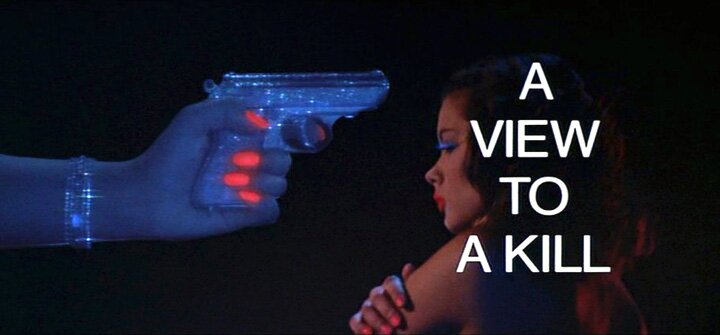 BlogalongaBond. One Bond film a month until Skyfall arrives in November. BlogalongaBond. One Bond film a month until Skyfall arrives in November.
WHY WON’T ROGER MOORE DIE? That was the question that haunted me throughout the last six Bond films. No matter what people threw at him - coffins, snakes, octopodes – he just refused to go away.
In A View to a Kill, a Bond film so bad that even Roger himself didn’t like it, the wrinkled old codge somehow survived the onslaught of horses, a machine gun AND a 5'10" black woman.
That’s when the answer hits you: it's not because he’s invincible or amazing (or because his stuntman does all the work); he won't die because he’s already dead. Underneath that wig, he probably has less hair than Bruce Willis.
He looks more like a shrivelled onion now than a secret agent. When he sleeps with a girl at the end of the opening sequence, it’s not just awkward, it’s psychologically traumatic. (Either that girl has one hell of an Elektra complex, or she’s being paid a LOT of money.)
So why bother with A View to a Kill at all? Certainly not for Christopher Walken’s dreadful villain, who spends his time shooting people and wearing sunglasses (he’s German AND French, the script explains). Not the clunky Silicon Valley storyline, desperate to appear up to date with the cool kids. Not even John Steed’s appearance as a jovial sidekick, which begs for a spin-off series, or Grace Jones’ intimidating May Day can make things fun.
The answer is, of course, the inimitable John Barry.
The film may be a pile of gubbins, but with his tenth soundtrack, Barry’s rarely been better. How did the musical maestro do it? Well, this pamphlet stuck inside my copy of the A View to Kill soundtrack has a few answers…
Read more...
Sunday, 29 January 2012 Written by Ivan Radford
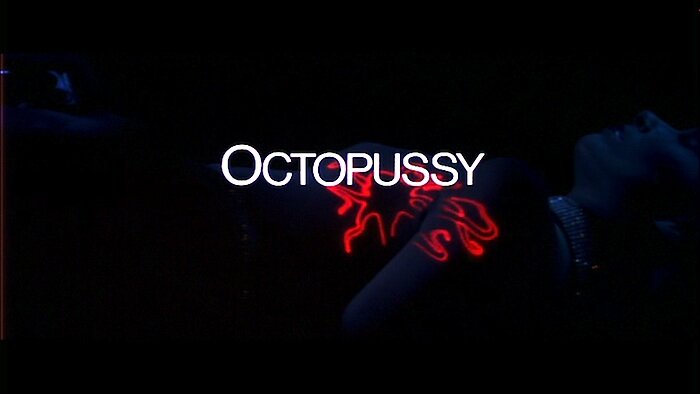 BlogalongaBond. One Bond film a month until Bond 23 turns up. BlogalongaBond. One Bond film a month until Bond 23 turns up.
Bond walks out of an Indian casino. He tips one of the waiters. "That will keep you in curry for a few weeks," he says.
Octopussy is a weird Bond film. In between its casual racism, hollowed-out crocodile boats and islands full of scantily-clad women, there’s an almost-discernible plot. It moves from a fake Faberge egg in a rather neat auction scene (taken from Fleming’s short story) to nuclear warheads at enough speed to trick you into thinking it’s an intelligent story. The problem is that it does this via casual racism, hollowed-out crocodile boats and an island full of scantily-clad women. And, at one point, Roger Moore dressed up as a clown.
As always, the stunts are impressive, but when an ancient Roger Moore constantly sends himself up because even he realises it’s impossible to take him seriously, you’ve pretty much hit the bottom of the franchise. He used to look like a vampire feasting on young, unaware virgins. Now, Moore's Bond looks like a corpse, animated by Cubby Broccoli for his own sick amusement. In one scene, Bond is chased by an elephant. It's hard to tell them apart. Yes, Steven Berkoff’s psychotic General is wonderful and the return of Maud Adams is a welcome sight, but neither are enough to wipe out the memory of Roger Moore swinging through the trees and emitting a loud Tarzan yell.
Octopussy is big. But it’s certainly not clever.
Fortunately, just as Moonraker was rescued by the fact that it actually ends, Octopussy benefits from a typically impressive title sequence. Why single these credits out from the franchise? There are better openings to analyse (an honourable mention here to Daniel Kleinman’s recent work from Goldeneye to Casino Royale) but it’s either a Maurice Bender tribute now or a look at John Barry’s excellent score – and the music is one of the few good things I can talk about next month in A View to a Kill.
So, how can you follow Octopussy’s example and make your own iconic 007 introduction? Here’s a handy guide to designing your own Bond title sequence, written by the expert...
Read more...
Friday, 06 January 2012 Written by Ivan Radford

I haven't got around to working on my next BlogalongaBond piece looking at Bond scores, but word this week that Thomas Newman could be picking up David Arnold's baton to provide the soundtrack to Bond 23, aka Skyfall, got my mind racing.
Thomas Newman? A Bond score? Thomas-American-Beauty-Newman? The guy most widely known for Any Other Name, a piece that showcases both his tinkling piano melodies and die-hard love of the vibraphone?
It's a pretty clear indicator that Sam Mendes is making himself at home in the director's chair - after five Bond films on the trot, it takes a lot to remove David Arnold from scoring duties.
Newman, presuming he does get the job (likely, given his previous collaborations on all of Mendes' work, except for Away We Go), would be the *counts quickly on fingers* ninth person to compose Bond music. John Barry, of course, led the way, arranging Monty Norman's guitar-twanging theme for Dr. No and defining the franchise's sound. George Martin, Marvin Hamlisch and Bill Conti all tried to fill his shoes with varying pop-tinged, electro-scores that never quite fitted the bill. (The opening of For Your Eyes Only is enough to make your ears cringe like a young woman being kissed by Roger Moore.) Michael Kamen warmed down from Die Hard with some typically excellent work, while Eric Serra's Goldeneye soundtrack... erm, yeah. That also exists.
So is Newman better suited to the task? A quick listen to one of his tunes from American Beauty (Dead Already) doesn't raise hopes:
But one quick change to that riff and things are starting to sound like they're on the right track...
Read more...
Friday, 30 December 2011 Written by Ivan Radford
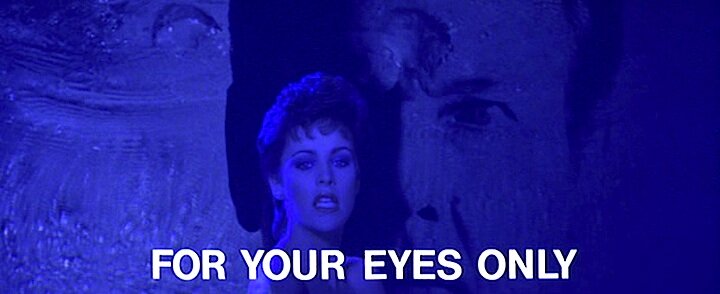
BlogalongaBond. One Bond film a month until Bond 23 turns up.
I make a point of always trying to watch a film to the end, even Horrid Henry: The Movie. But with For Your Eyes Only, I did something rare: I stopped watching. Out of sheer boredom. For the rest of Christmas, Roger Moore’s smug face taunted me from his DVD over the top of my turkey with a reproachful wink. (Timothy Dalton would never do that.)
A casual jog after Moonraker’s sprint through fountains of spraying crap, For Your Eyes Only tried to scale things back and give 007 something more down-to-earth to deal with. It begins this grounded approach by killing off Blofeld with a remote-controlled helicopter while 007 makes jokes about his hair.
A fresh start for the franchise? Not quite. Instead, the 12th entry in the series is the one thing worse than laughable: it’s completely forgettable. There's a lost encryption device, a woman wanting revenge, a young girl ice skating... Even with impressive stunts, a bobsleigh set piece and a neat Citroen car chase, it couldn’t be more boring if you recited the plot in the middle of a lecture about the Eurozone crisis hosted by Orlando Bloom.
Returning to the DVD a few days later, I discovered I couldn’t remember what was going on. I was sure that at some point in the last 30 years someone had made a film called For Your Eyes Only - and that I had definitely watched it - but for the life of me couldn’t remember a single thing about it. A lot like Quantum of Solace.
Ok, that’s a lie. I can remember one thing: the theme song. Beginning with Bill Conti’s titular five-note fanfare of gentle synth pop, it buried into my brain like an advert for Lenor fabric softener, quietly calling out at 3am: “You must keep watching…”
Clearly someone out there thought it was a good song – alongside Live and Let Die and Nobody Does It Better, it’s one of the few Bond songs to be nominated for an Academy Award (allowing the film to be called “the Oscar-nominated For Your Eyes Only”). Conti did a decent job, then, of rousing the awards voters. How did he replace John Barry to successfully create such a crucial element in the Bond formula? Well, it turns out he had this informational pamphlet in his pocket – an up-to-date version of which I coincidentally found in my DVD box.
Here’s a guide to writing a Bond song...
Read more...
|







 BlogalongaBond
BlogalongaBond BlogalongaBond.
BlogalongaBond. BlogalongaBond.
BlogalongaBond.  BlogalongaBond.
BlogalongaBond. 
